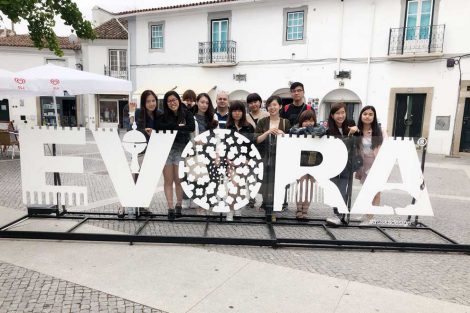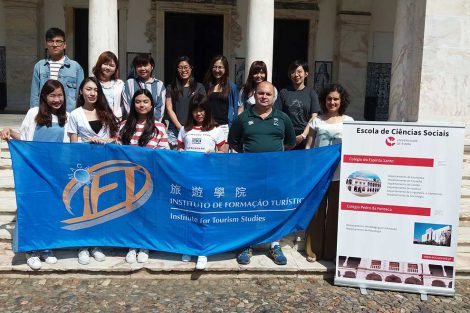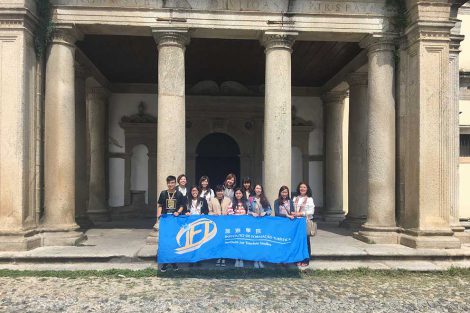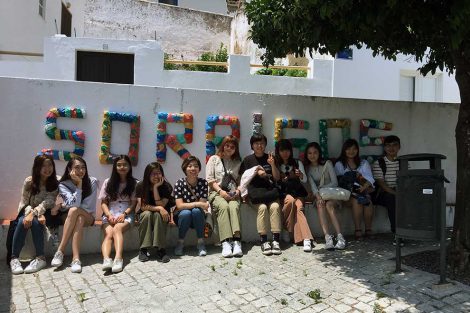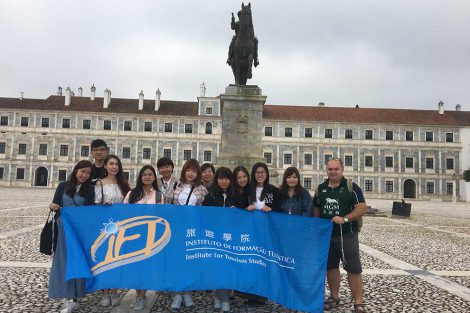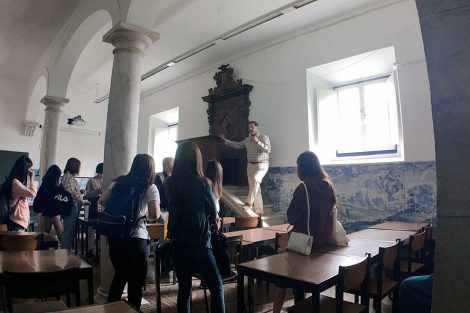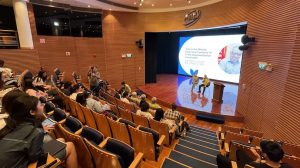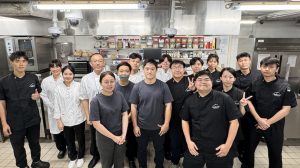A group of 11 IFT bachelor degree students, joined by Lecturer Mr. Miguel Oliveira, attended in July a summer international exchange programme at the University of Évora, in the Alentejo region of southern Portugal. The scheme allowed participants to experience the Historic Centre of Évora, a UNESCO World Heritage Site since 1986; and to visit some other historic towns in Alentejo.
The programme was jointly organised by IFT and the University of Évora and was themed “Tourism, Portuguese Language and Culture”.
The lectures for the summer programme were held at Colégio Espírito Santo, part of the University of Évora. The historic venue is beautifully decorated with several murals and is one of the city’s top tourist attractions. A common feature of having classes there is that often lectures are interrupted by tourists wandering around. This too happened to the IFT group.
The IFT students were also escorted on a tour of Évora by knowledgeable lecturers, ensuring the activity was not only interesting but also of great educational value.
The programme involved visits to other locations in the Alentejo region. These included Estremoz, a place with a strong Moorish influence, and a castle from the medieval Christian era. Participants also went to Mértola, a small town by the Guadiana River, that was an important trading centre in medieval times. An interesting feature of Mértola is that a site that is now home to a Catholic church, hosted in the past a Roman, then later a Muslim, place of worship.
The IFT group additionally went to Vila Viçosa, a town known as the “Princess of Alentejo”. The picturesque settlement is well known for the beautiful Vila Viçosa Ducal Palace.
A city full of history
For centuries Évora has played an important role in the civilisation of the Iberian Peninsula. This city now of museums was initially called Ebora by the Celtici, a tribe from the southern Iberian Peninsula that made it their regional capital. The Romans then conquered the city in the 1st century BC and ruled it until the 6th century. Many of their monuments and structures can still be seen around Évora today. Examples include the Temple of Diana and what is known locally as the Roman Wall.
In the 6th century, the city was conquered by Barbarian Visigoths. A period of economic depression followed as Visigoth culture was not focused on urban living in the manner of the Romans. Évora regained some of its status again under Moorish rule: Muslims from Northern Africa conquered the city in the 8th century and it saw substantial growth and development as an important regional trade hub. The Moors ruled Évora until the 12th century, when Christians finally managed to recapture permanently the city and also drove the Moors out of what is now modern Portugal.
The University of Évora first admitted students in 1559. It was the second university to be founded in Portugal, and was initially a Jesuit institution under the Roman Catholic Church.
Jesuits were historically prominent in Europe for their role in education and some forms of academic research. But with the 1759 expulsion of the Jesuits from Portugal, the university buildings were used for high school-level teaching. Only in 1973 would the campus once again host a higher education institution, as the University of Évora was re-established in modern form.
By IFT Lecturer Mr. Miguel Oliveira



